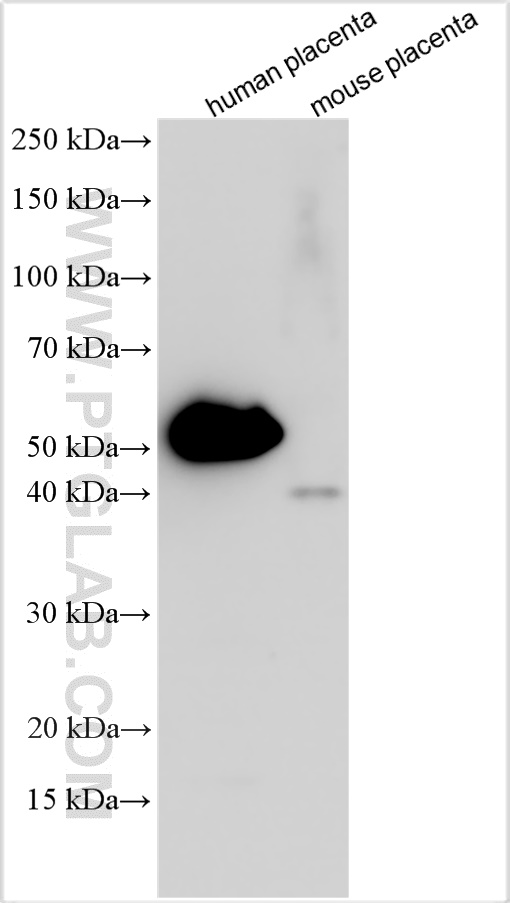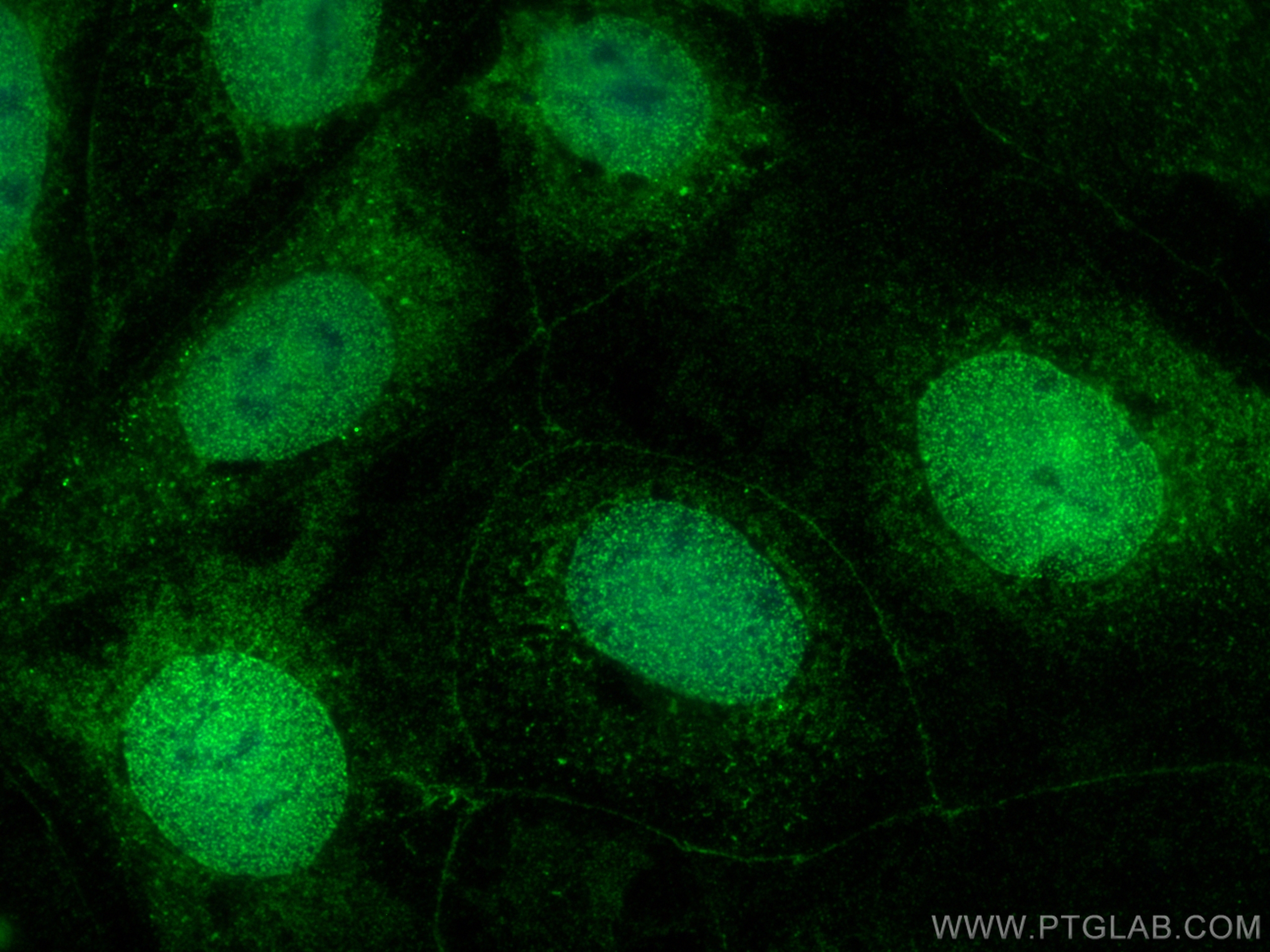验证数据展示
经过测试的应用
| Positive WB detected in | human placenta tissue, mouse placenta tissue |
| Positive IF/ICC detected in | Caco-2 cells |
推荐稀释比
| 应用 | 推荐稀释比 |
|---|---|
| Western Blot (WB) | WB : 1:500-1:1000 |
| Immunofluorescence (IF)/ICC | IF/ICC : 1:200-1:800 |
| It is recommended that this reagent should be titrated in each testing system to obtain optimal results. | |
| Sample-dependent, Check data in validation data gallery. | |
产品信息
20671-1-AP targets Synaptotagmin-8 in WB, IF/ICC, ELISA applications and shows reactivity with human, mouse samples.
| 经测试应用 | WB, IF/ICC, ELISA Application Description |
| 经测试反应性 | human, mouse |
| 免疫原 | Peptide 种属同源性预测 |
| 宿主/亚型 | Rabbit / IgG |
| 抗体类别 | Polyclonal |
| 产品类型 | Antibody |
| 全称 | synaptotagmin VIII |
| 别名 | SytVIII, SYT8, Synaptotagmin VIII |
| 计算分子量 | 44 kDa |
| 观测分子量 | 40 kDa, 50 kDa |
| GenBank蛋白编号 | NM_138567 |
| 基因名称 | SYT8 |
| Gene ID (NCBI) | 90019 |
| RRID | AB_3085610 |
| 偶联类型 | Unconjugated |
| 形式 | Liquid |
| 纯化方式 | Antigen affinity purification |
| UNIPROT ID | Q8NBV8 |
| 储存缓冲液 | PBS with 0.02% sodium azide and 50% glycerol , pH 7.3 |
| 储存条件 | Store at -20°C. Stable for one year after shipment. Aliquoting is unnecessary for -20oC storage. |
背景介绍
The synaptotagmins are integral membrane proteins of synaptic vesicles thought to serve as Ca(2+) sensors in the process of vesicular trafficking and exocytosis (PMID: 8058779). SYT8 (synaptotagmin-8) is related to insulin secretion, and its expression is positively regulated by the insulin promoter (PMID: 21336277). Due to alternative splicing, SYT8 may produce proteins with molecular weights between 25 and 40 to 44 kDa. An additional band of 50 kDa could also be detected (PMID: 16386321)
实验方案
| Product Specific Protocols | |
|---|---|
| WB protocol for Synaptotagmin-8 antibody 20671-1-AP | Download protocol |
| IF protocol for Synaptotagmin-8 antibody 20671-1-AP | Download protocol |
| Standard Protocols | |
|---|---|
| Click here to view our Standard Protocols |

